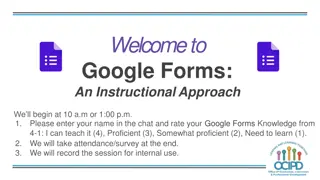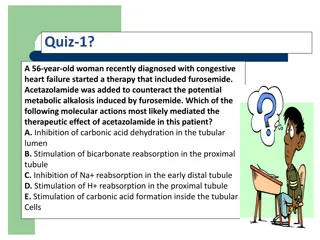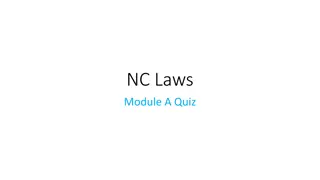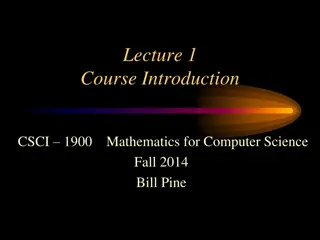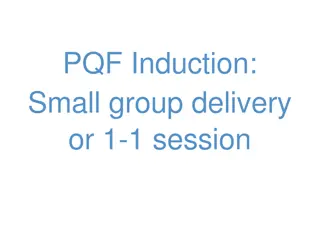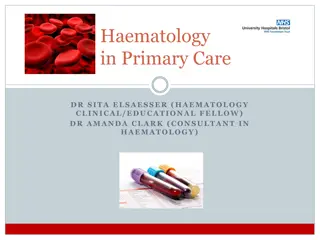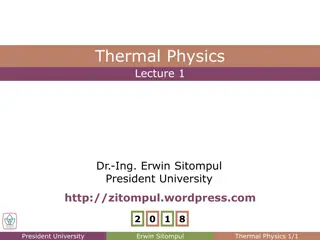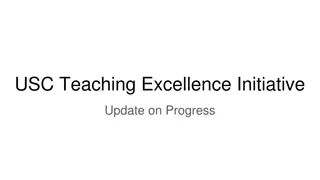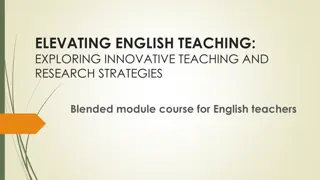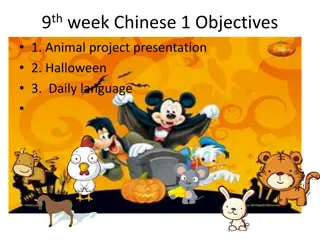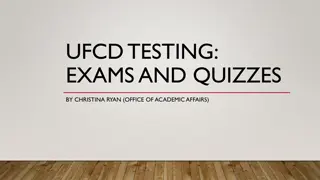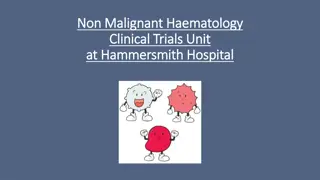Innovative Approach to Using Pre-Quizzes for Effective Teaching in Haematology 2 Course
Haematology 2 course redesigned with pre-quizzes to engage students, provide feedback to lecturers, and encourage participation without fear of penalties. Using tools like MQlicker and Google Forms, quizzes included an "I do not know" option to enhance learning outcomes and tailor teaching to students' needs, leading to improved understanding and focus on areas of weakness.
Download Presentation

Please find below an Image/Link to download the presentation.
The content on the website is provided AS IS for your information and personal use only. It may not be sold, licensed, or shared on other websites without obtaining consent from the author. Download presentation by click this link. If you encounter any issues during the download, it is possible that the publisher has removed the file from their server.
E N D
Presentation Transcript
IT IS OK TO NOT KNOW How to get the most out of quizzes for students and teachers.
What were we trying to achieve? Haematology 2 is an advanced third year subject that focuses on diagnosis of Haematological malignancies. Challenging subject that requires students to learn new medical terminology and diagnostic criteria that they have not yet been exposed to. Many students struggled with the sudden increase of in-depth knowledge they were expected to acquire. When redesigning the subject we wanted to find a away that incorporated pre-quizzes but actually provided the lecturers with useful information
So we made a new type of quiz These quizzes had 3 main goals: Give the students a chance to engage with the learning objectives before the lecture Give the lecturer feedback on the baseline of knowledge of the students before the lecture Encourage the students participation by providing an anonymous forum where they could admit that they did not know the answer to the question with no penalty of marks
How did we do this? Using MQlicker previously and Google Forms going forward, lectures were broken into small series according to content and quizzes were formed on each series. One option on the MCQ quiz was I do not know Students were encouraged to choose this option rather than guessing the answer
What did it look like? The first question indicated that students had a good understanding of a basic definition of Acute Leukaemia Subsequent questions identified students did not know which cytogenetic abnormality belonged to which leukaemia
What did this achieve? Lecturers were able to correctly gauge the level of knowledge the students has before the lecture series started This allowed us to tailor their learning Areas where the learning objectives were already well understood could be condensed, allowing us to focus on other areas Identified that some students did not understand the terminology Allowed us to focus other flipped learning activities on areas of weakness.
Results I did not expect Do you understand the abbreviations I have been using? Do you understand the abbreviations I have been using? Yes No Only Some
But it didnt end there After the lecture series we asked students to retake the quiz in small groups. This allowed us to see if students moved their answers away from I do not know and now knew the correct answer It allowed us to identify areas that students were still unsure of, or may have the wrong answer for
How things change Pre-Quiz Post-Quiz Refractory Anaemia with ringed sideroblasts Refractory Anaemia Macrocytic anaemia with 5q del Refractory Anaemia with multilineage dysplasia I do not know
Revisiting the information When it was identified that students either did not know or were incorrect in their answer, we returned to the original slide with the information on it, revisiting the points taught and correcting any gaps in knowledge on the spot.
One of our best results Pre-Quiz Post-Quiz MPN AML MDS MDS/MPN I Do not know
Participation Pre-quizzes in Haematology 2 were completed by 41% of students for the first quiz and 27% for the second. Post-quizzes were completed by all those who attended the lecture. We rolled this out in Week 1 in Haematology 1, 37% of students completed this task. The multi-part question in the Haematology 2 final that directly related to one of these quizzes scored highest of the four multi-part questions Name the cell that is circled: Name the cell that is circled Neutrophil Neutrophil Lymphocyte Lymphocyte Monocyte Monocytes Eosinophil Eosinophil Basophil Basophil Platelet Platelet Erythrocyte Erythrocyte I do not know I do not know
What does it look like now? https://goo.gl/forms/yg4EEeZGOcOeXhkE3
Any Questions I do not know





